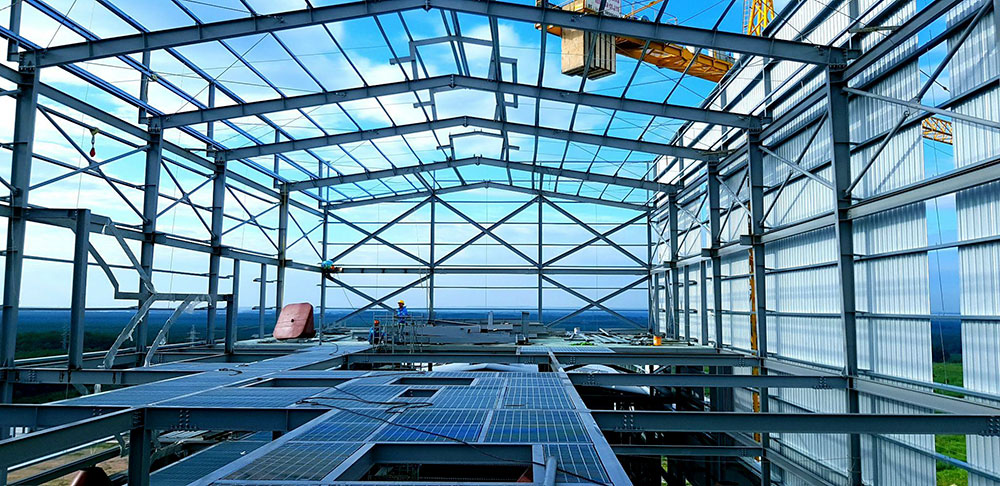Steel frame industrial buildings are revolutionising the manufacturing landscape across the UK. As you figure out the demands of modern production, these structures offer unmatched versatility and strength, ensuring your operations are both efficient and future-proof. Whether you’re expanding an existing facility or starting from scratch, the benefits of steel frames are hard to ignore.
Incorporating steel frames into your manufacturing site not only enhances durability but also provides the flexibility to adapt to changing needs. From accommodating heavy machinery to supporting complex layouts, steel frames deliver a robust foundation for innovation. You’ll appreciate the cost-effectiveness and reduced construction time, allowing you to focus on what truly matters—growing your business.
As sustainability becomes a priority, steel’s recyclability and energy efficiency make it a smart choice for environmentally conscious manufacturers. Embrace the potential of steel frame industrial buildings and position your manufacturing enterprise for long-term success in an ever-evolving market.
Benefits of Steel Frame Industrial Buildings
Steel frame industrial buildings stand tall in the manufacturing sector, offering a range of benefits. When considering these structures, you might wonder about their true advantages.
Durability and Strength
Steel frames blend robustness with reliability. Such structures endure harsh conditions and heavy loads. With steel, you’re investing in a building that’s not just strong today but remains sturdy tomorrow. How does a structure withstand time? By resisting corrosion and weathering. Steel’s resilience also adds a layer of safety, ensuring that operations seldom halt due to structural concerns. This strength means fewer repairs, letting you focus on the core of your business.
Cost Efficiency
Savings begin when you choose steel. Construction costs drop with swift assembly and reduced labour. Maintenance doesn’t drain resources, as steel requires minimal upkeep compared to other materials. Financing becomes easier with predictable expenses—no surprise repairs squeezing budgets. Over time, lower insurance premiums often accompany steel constructions due to their safety record. Does the cost efficiency surprise you? It’s not just about initial savings but long-term financial sense.
Flexibility and Customisation
Steel frames don’t just rigidly stand; they adapt and transform. You design spaces that shift with your needs, accommodating machinery and workflow changes. When unexpected growth arises, expansions integrate seamlessly, avoiding disruptions. Have a vision? With steel, it’s easier to bring custom designs to life, crafting everything from open spaces to tailored layouts. The possibilities don’t end when the building’s up; instead, they grow alongside your aspirations.
Design and Construction Considerations
Steel frame industrial buildings require careful planning to maximise efficiency. Let’s explore two key aspects: structural design and environmental considerations.
Structural Design
Steel frames provide a backbone for manufacturing facilities. You might ponder how structural integrity meets flexibility. The answer lies in precise engineering that supports heavy loads while allowing for interior changes. Considerations include material strength, load distribution, and seismic activity. Your building’s skeleton needs to embrace adaptability, ensuring spaces remain functional as needs evolve. Imagine a giant puzzle of beams and columns forming pathways for operations, engineered to withstand time’s trials.
Environmental and Energy Efficiency
Sustainable design doesn’t just protect the planet; it’s a smart economic move. Steel frames contribute to energy efficiency, making buildings greener and cheaper to run. How? They allow for insulation that combats heat loss. You should think about orientation, natural light, and advanced HVAC systems. Adding solar panels and rainwater harvesting can further reduce your carbon footprint. Energy-efficient design ensures that while production ticks over, your costs and emissions stay low, balancing productivity with responsibility.
Applications in Manufacturing
Steel frame industrial buildings transform manufacturing landscapes, offering robust and adaptable structures. Think about your production line requirements.
Types of Manufacturing Processes Supported
Steel frames accommodate diverse manufacturing processes effortlessly. Heavy machinery aligns well with the strong frames. You might need to adjust layouts often; these buildings allow for it. Is your product line expanding? Flexible interior spaces help growth.
For instance, assembly lines benefit from the expansive floor plans. Precision engineering equipment requires stable environments; steel frames provide this. Bulk production operations, where large volumes are created, find optimal use here. The durability supports high operational demands, keeping your production flowing smoothly.
Challenges and Limitations
Steel frame industrial buildings, despite their advantages, come with distinct challenges. Barriers to wider adoption include initial costs and ongoing maintenance requirements. While these issues may seem daunting, understanding them can guide better decision-making.
Initial Investment Costs
Steel construction involves a higher initial investment compared to traditional building materials. Both raw material prices and specialised labour can contribute to this. As you plan, consider the short-term burden of these costs against long-term gains. Will your budget allow for custom design features, or should it prioritise simpler layouts? Steel frames offer strength and flexibility, yet typically demand upfront capital that might strain initial resources.
Maintenance and Longevity Issues
Despite their durability, steel frame buildings require regular maintenance. Corrosion can be an issue, especially in humid environments, affecting longevity. How often should you schedule inspections to prevent rust? Even though steel needs less upkeep than other materials, neglecting minor issues could lead to expensive repairs. Longevity might be compromised if maintenance lapses occur. Regular attention ensures your steel frame building remains a sound investment, supporting manufacturing activities without hiccups.
Future Trends in Steel Frame Industrial Buildings
Exciting shifts in steel frame industrial buildings suggest a bright future for manufacturing. Do you ever wonder how technology might shape these structures?
Technological Advancements
The integration of smart tech can transform steel frame buildings. Automation and IoT aren’t just buzzwords; they promise efficiency and precision. Picture sensors monitoring structural health, ensuring safety and longevity, saving both time and money. Consider 3D printing as an ally for customisation, swiftly bringing innovative designs to life. You’re not just updating; you’re future-proofing your facility. Why stick to the old ways when new tech offers so much potential?
Sustainability Initiatives
Sustainability isn’t optional; it’s essential. As you strive for greener manufacturing, steel becomes your ally. Recycled steel, essential in eco-friendly designs, reduces waste. How about solar panels on vast roofs, turning unused space into energy savers? Capture rainwater for non-potable use and observe operational costs dwindle. Steel frames ensure thermal efficiency, meaning lower energy bills without sacrificing comfort. Wouldn’t it be great to exceed eco-standards while cutting expenses?
Final Thoughts
Embracing steel frame industrial buildings in your manufacturing operations can significantly boost your efficiency and sustainability. These structures offer a versatile and robust solution that aligns with modern manufacturing demands while supporting eco-friendly practices. As technology and sustainability continue to evolve, steel frames will likely become even more integral to the manufacturing sector. By investing in these innovative buildings, you’re not only enhancing your operational capabilities but also positioning your business for future growth and success.








